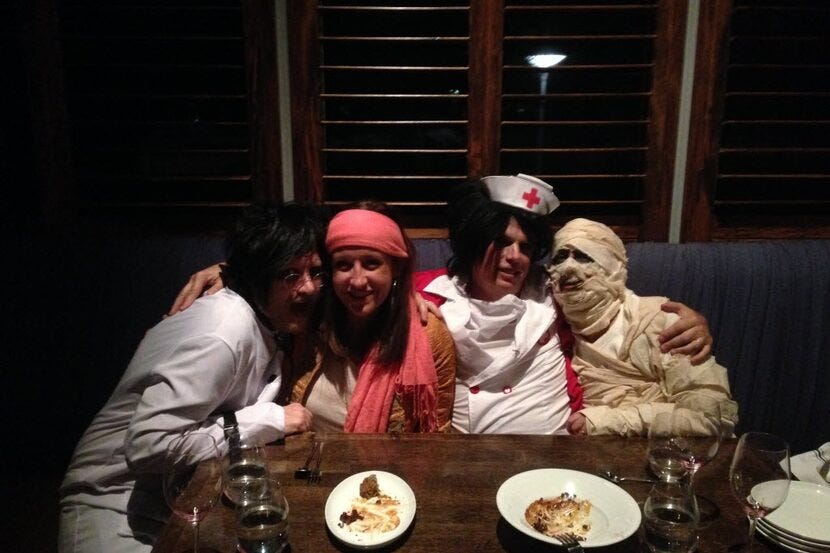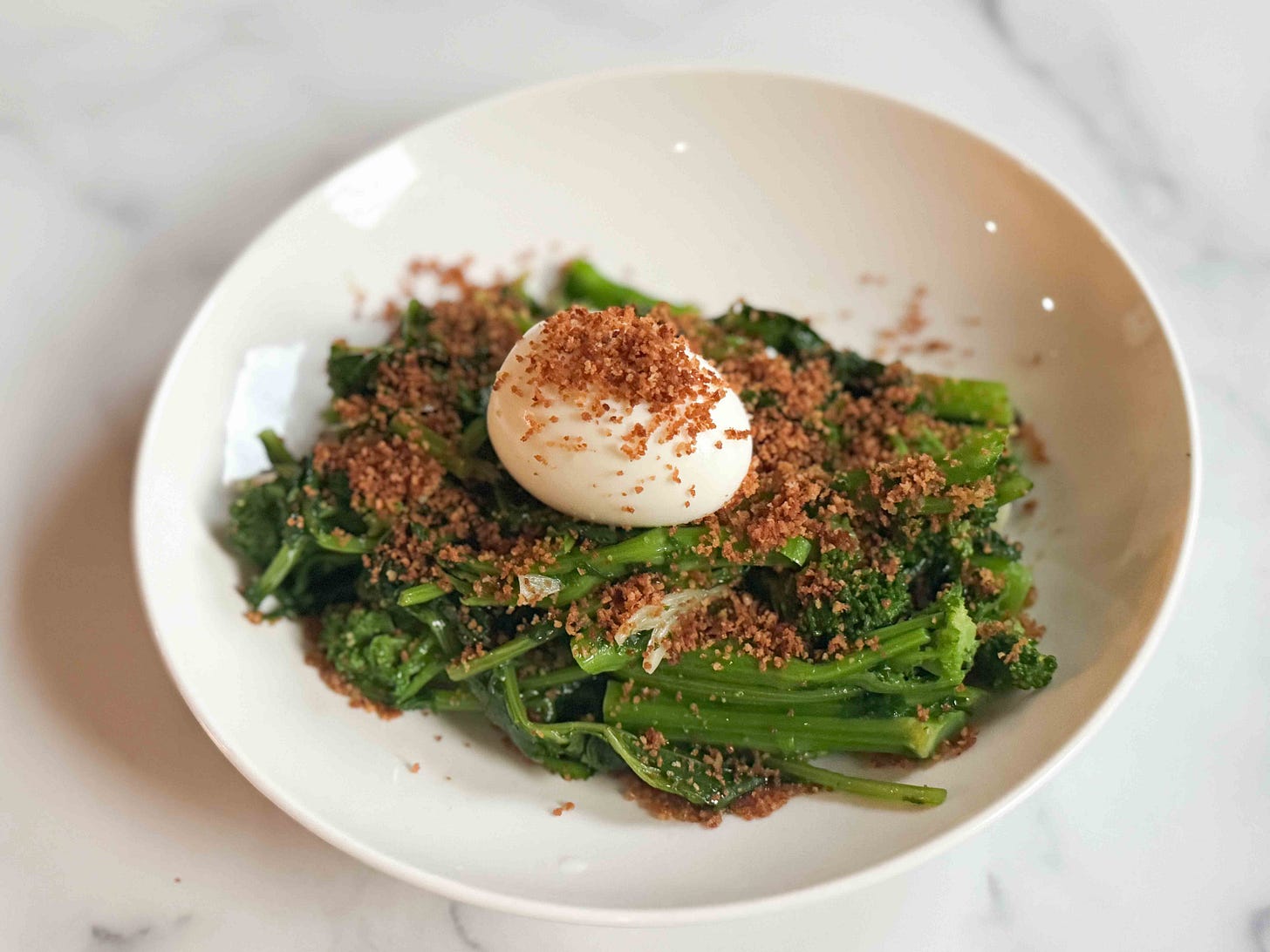How I got here
After decades writing for legacy media (including 8 1/2 years as a restaurant critic), I needed to evolve.

Happy Friday, self-actualizing cook!
I thought I’d break from normal programming and share with you how Cooks Without Borders was born, how I came to be doing what I do, and what I very much hope happens next.
After nearly a quarter-century working as a journalist (and as an author for a good chunk of that time), I began longing for something else. Partly it was because I had hit a glass ceiling. The year was 2015, and I was Restaurant Critic for the Dallas Morning News – a position I’d held for six years. Before that I had an amazing job as an editor at the L.A. Times, a run I never wanted to end, but the financial crisis of 2008 took care of that.
I wished to evolve out of the Restaurant Critic position. Though I loved it for the first five years, it wasn’t a job I’d ever previously wanted, as I knew how unrelentingly demanding it was. Five years, I figured, was as long as I could do it. I would have relished diving into another coverage area in the newsroom; my last position at the L.A. Times was as Editor-in-Chief of the Sunday magazine (for four years prior, I was Food Editor). Earlier in my career, I wrote about politics, women’s issues, general culture and books. I had breadth as a journalist. I had begun my writing life as a novelist. My first novel was well received (glowing review in the New York Times), but I doubted I could make a living writing literary fiction, and so leaned into journalism.
Back to Dallas in 2015, 2016. The masthead at the News wanted to keep me in my position, as I had a strong and loyal readership. There’d be no moving around the paper for me. It had already become painfully clear that journalism’s business model was in trouble, and if I wanted to cross over and write about something else somewhere else, it wasn’t likely another publication could match my salary, which was respectable as journalism goes, but four-fifths of what I was paid at the L.A. Times seven years earlier. Not a good direction.
My escape fantasy: I’d fashion myself into a restaurant consultant. How lovely would it be, rather than constantly writing about what restaurateurs were doing wrong, to instead work alongside them helping them achieve something beautiful?
That was something I really really really wanted.
It seemed difficult to accomplish, as I’d need first to get a job with a restaurant group to learn the business from the inside, and journalistic ethics prevented me from approaching the restaurateurs I’d want to learn from. If I asked them for a job and it wasn’t in the stars, I could never cover them as a critic again. Not fair to them. Quite the sticky conundrum.
At the same time, I thought it would be a good idea to create something meaningful that could never be taken away from me. If journalism’s roof caved in, or if I lost my job, or if I got stuck at the newspaper forever, it would be a permanent project I’d have for my own.
I really missed cooking – a casualty of dining out six nights a week. I had deep experience developing recipes, from the two cookbooks I’d written and also from my days as the L.A. Times’ Food editor.
I’d create a cooking website.
But what kind? What would distinguish it?
The answer came on June 16, 2015, when Donald Trump came down that escalator and announced his candidacy. Mexican immigrants were rapists, he said, and then proclaimed that we should build a big wall between the United States and Mexico.
We should do the opposite!, said I. Tearing down walls between peoples was a much better idea. If we could learn from each other, the world could be a richer, more harmonious place. What better way than to learn about each other’s cultures through food?
Cooks Without Borders was born.
My best friend from childhood, Juliet — an award-winning web designer with whom I was still very close — designed the site. (Juliet is an active member of the Cooks Without Borders Cookbook Club, so you can meet her there!)
The website got off to a great start. My longtime editor at the News had never wanted me to write cooking stories, but my new one caught wind of Cooks Without Borders, admired it, and suggested a cross-publishing arrangement. It was dreamy.
For years, I didn’t make a dime on Cooks Without Borders – it was just my passion project.
I worked on building up a database of outstanding recipes, as I reviewed cookbooks and told stories I cared about, at the same time I continued reviewing restaurants.
And then, somehow, I managed to escape the newspaper. Without compromising my ethics, I landed a fabulous job with a start-up hospitality group. I was employee #2. The founder was the restaurateur I most respected in Dallas. I couldn’t believe my good fortune.
Wanting to give my new career my all, I shut down Cooks Without Borders.
❦
Two years later, with the blessing of my employer, I launched my restaurant consultancy. It was scary, but I was excited. The employer I was leaving became my first client. Another client materialized. Then another, and another. I was making a decent living!
I also relaunched Cooks Without Borders.
And then the pandemic hit.
As you’ll remember, the restaurant industry suffered terribly. The establishments that managed to stay open had no money to pay a consultant. I did a lot of pro bono work, and organized fund-raisers to feed hospitality workers.
And I threw myself into Cooks Without Borders.
Never in my life have I done as much cooking as I did in those early days of the pandemic – and of course there was a ton of writing. If I was going to be shut in, I would make the most of the situation.
I applied for – and got – a $10,000 grant from Texas Womens University - Center for Women Entrepreneurs. And then I was accepted into a start-up accelerator where my goal was to figure out how to make Cooks Without Borders profitable. (I still hadn’t made a dime from it.)
The business model proved very challenging, as the user experience was of utmost importance to me and I never wanted ads. I didn’t have enough traffic for ad income to be meaningful, in any case. I tried a membership model, signed up some wonderful, supportive readers (many who are paid subscribers to this Substack – thank you all you OGs!!!!). But it didn’t grow, and I did away with that. I held my nose and became an Amazon affiliate, and earned a little that way, and then became a Bookshop affiliate, which I didn’t have to hold my nose for.
I thought perhaps if I could build the site into something spectacular, keep growing it and keep winning awards, a media company might want to buy it one day. With any luck, they’d hire me to run it. (The site was honored with two Webby nominations and one People’s Voice Webby Award, and it was a finalist for an IACP Award.)
Today my restaurant consulting business is flourishing – and I enjoy it. But what I really, really want to do when I grow up is just run Cooks Without Borders — and related things, like teaching workshops, writing ebooks and taking people on gastronomic trips to Italy and maybe France.
So volià — now you probably know me a little better. This is why I’m putting all my eggs in the Substack basket, putting my heart and soul into the writing I’m doing here. I love the way this newsletter and Substack site can interact with the original CWB website – that’s where the recipes live that I frequently link to.
And YOU are one of the biggest reasons I love being here. The community we’re creating here feels like a warm embrace.
Thank you for helping make this possible!
Love, Leslie
P.S. If you happen to be the server who snapped that photo of my costumed friends and mummy me in 2014, please let me know so I can credit you for the photo.





